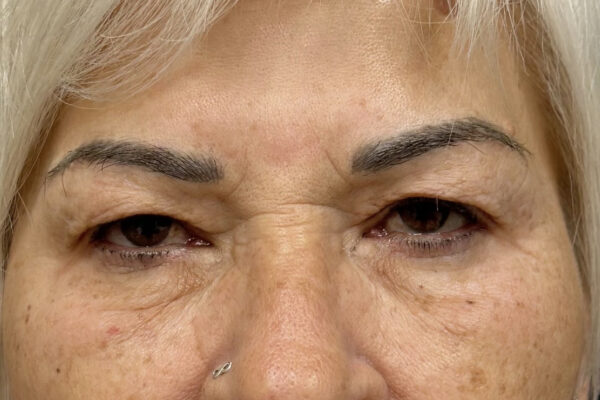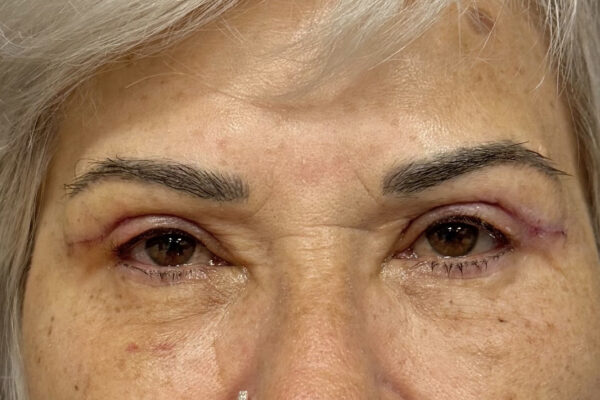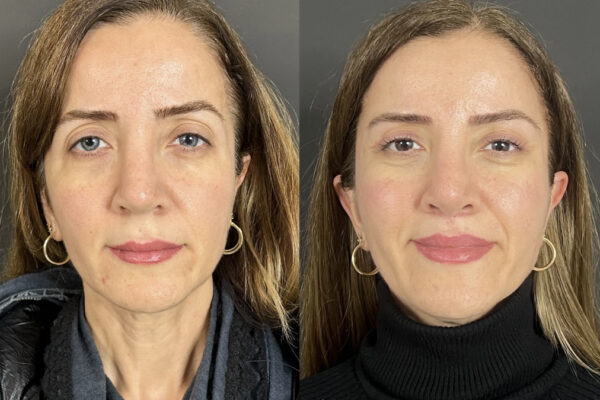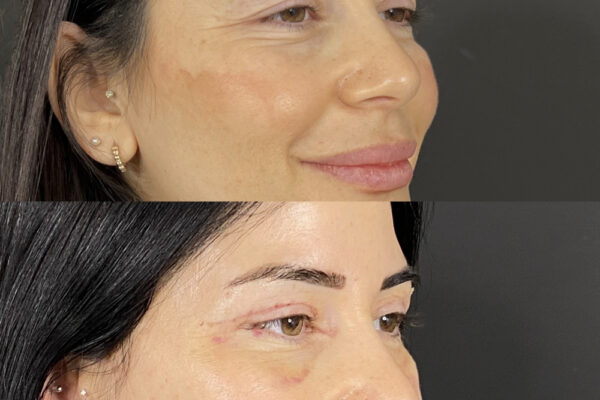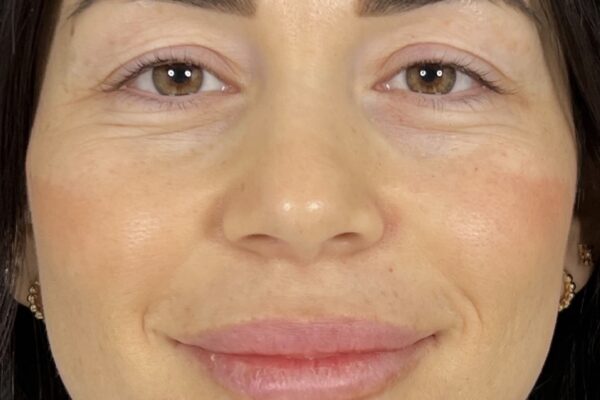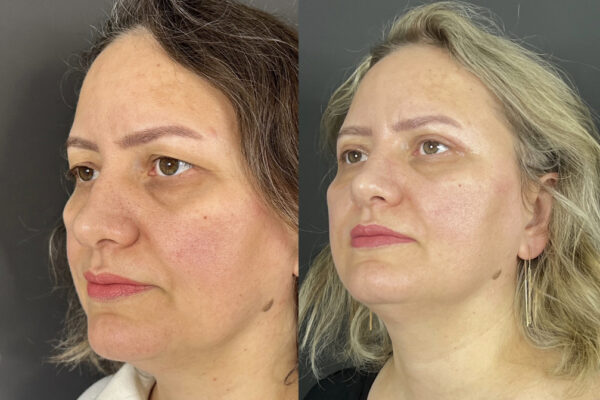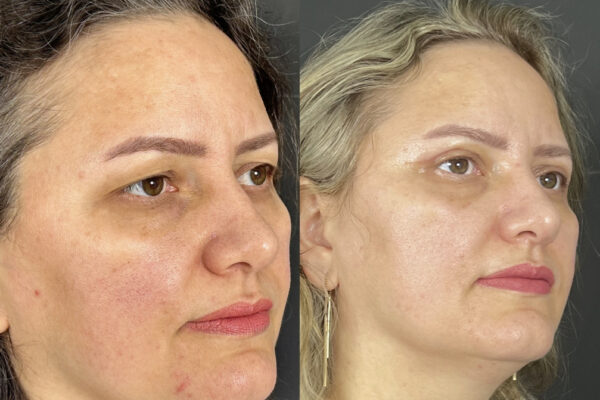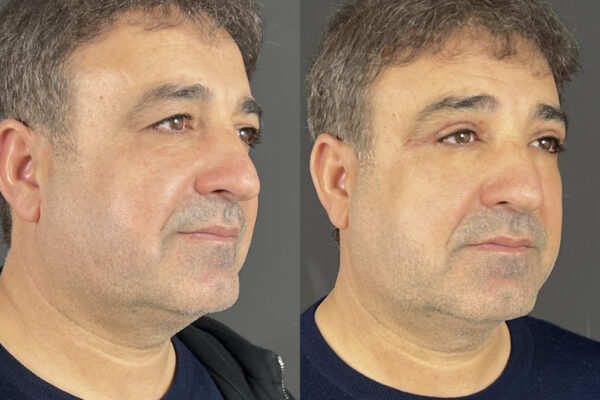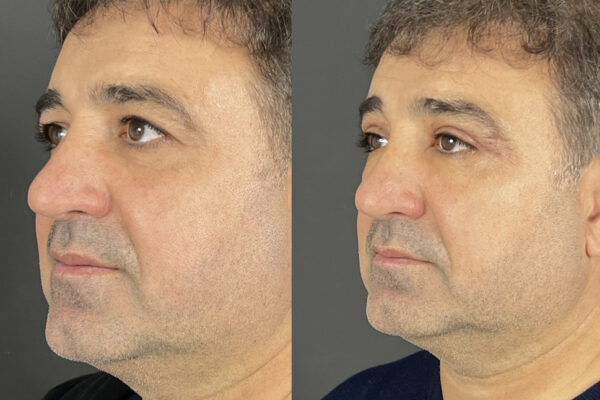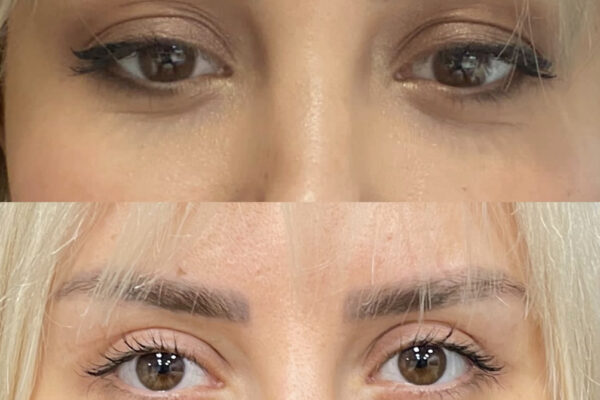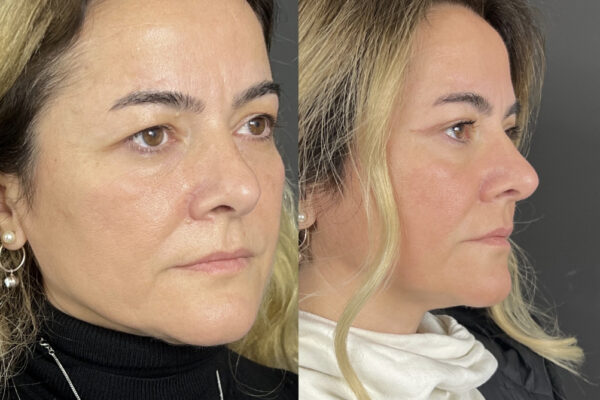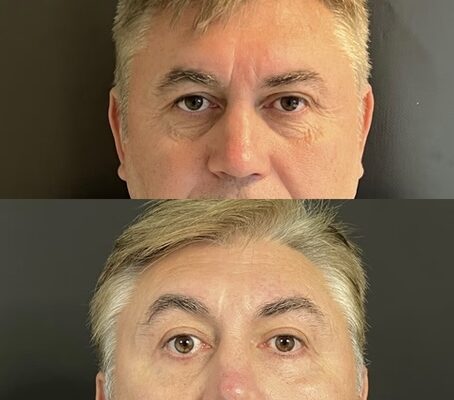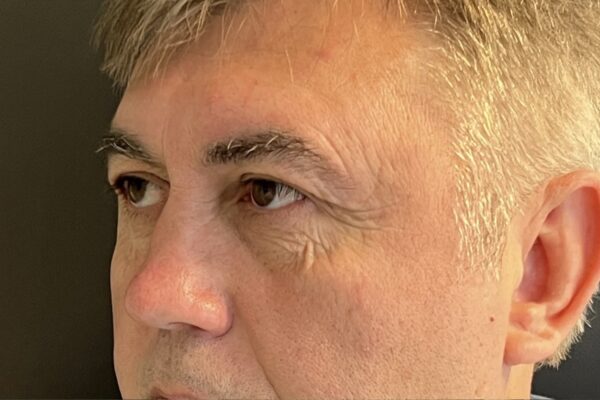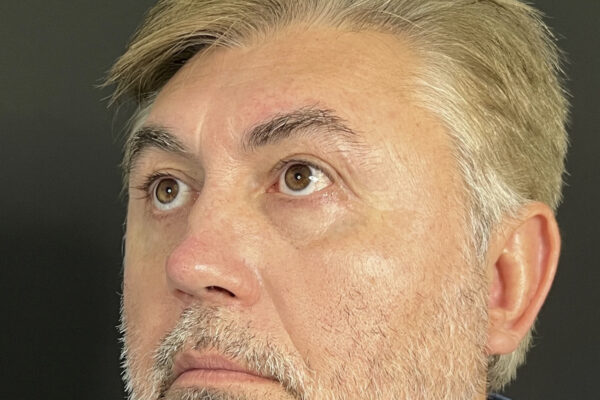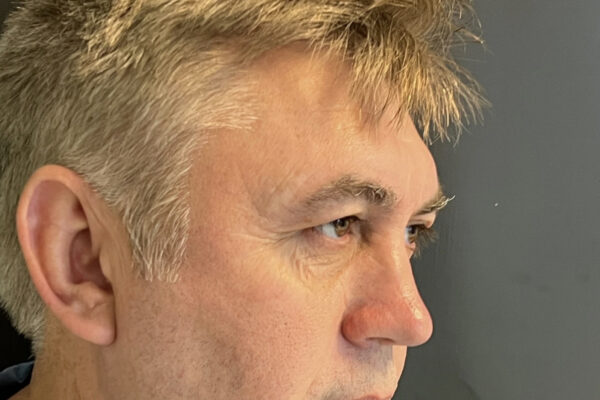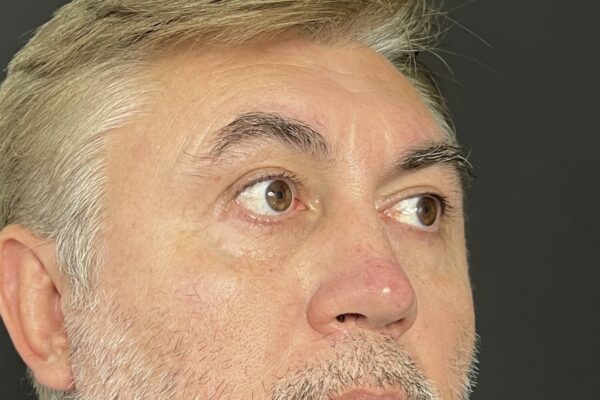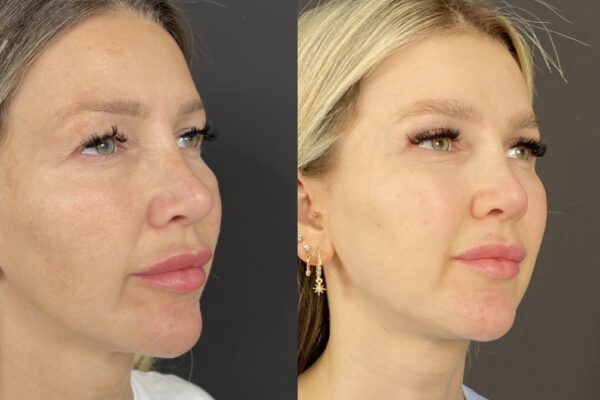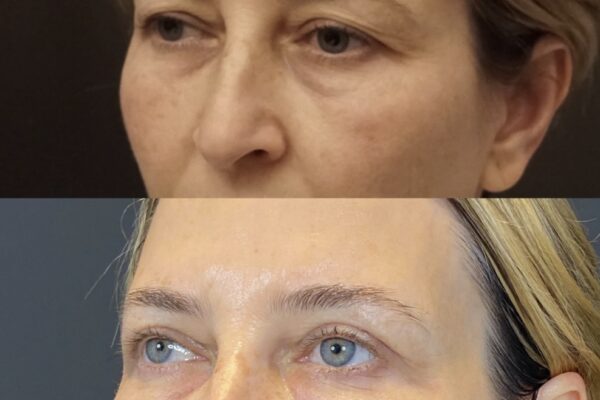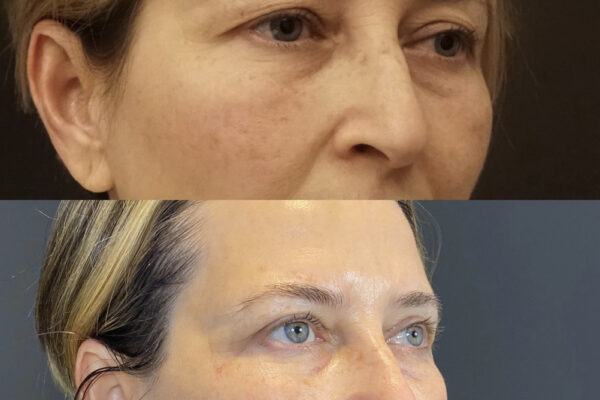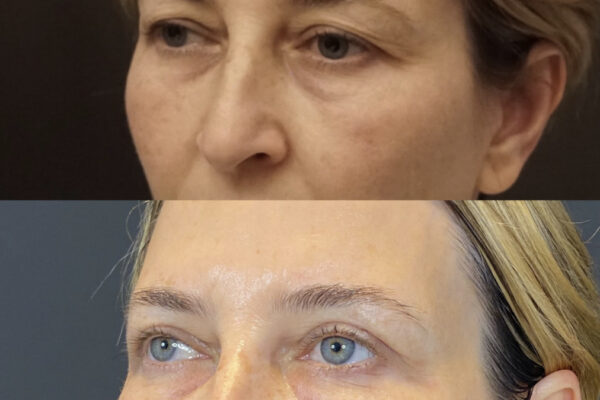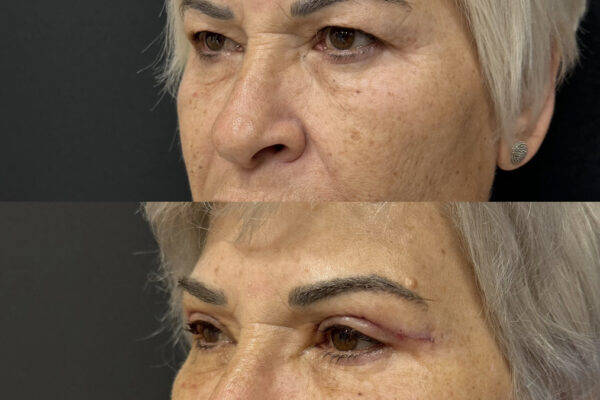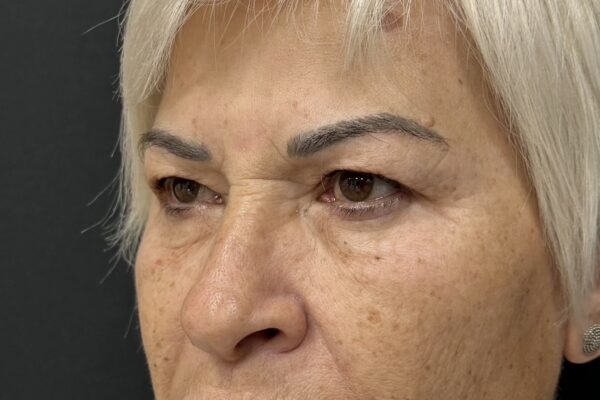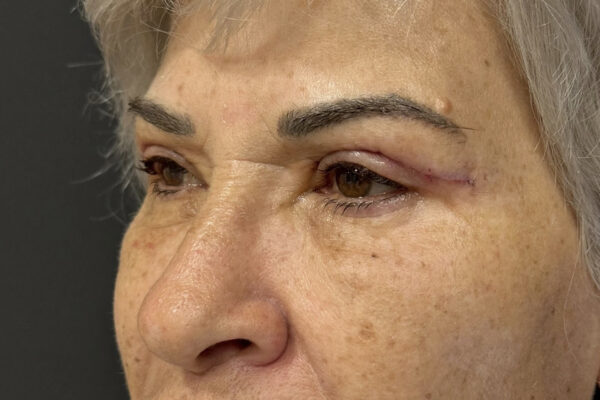
Blepharoplasty
HERMES HEALTH
BEFORE/AFTER
Blepharoplasty: Periorbital Tissue Restoration
Blepharoplasty, or eyelid surgery, is a surgical procedure that improves and rejuvenate the appearance of the eyelids and area around the eyes. The procedure can be performed on upper eyelids (to remove excess skin), lower eyelids (to reduce bagginess), or both.
A patient may be interested in blepharoplasty to:
- Correct defects, deformities, and disfigurations of the eyelids
- Improve vision that may be obscured by drooping eyelids
- Reduce signs of aging

Who performs blepharoplasty?
Blepharoplasty is performed by a plastic surgeon.
What happens during blepharoplasty?
During blepharoplasty, the surgeon cuts into the creases of the eyelids to trim sagging skin and muscle and remove any excess fat. Incisions are carefully placed in natural eyelid creases, making scars virtually invisible once healed.
The procedure usually takes around one to two hours. Most patients return to normal activities with a week provided post-procedure supportive care measures are followed. Temporary bruising and swelling around the eyes are common but normally resolve quickly with regular use of cold compresses and prescription ointments to aid healing. Final results become apparent as swelling resolves, typically within a few weeks to a few months.
Can blepharoplasty be combined with other facial procedures?
Yes, blepharoplasty is often part of a comprehensive facial rejuvenation plan. Eyelid surgery can enhance your appearance but is not expected to drastically alter your appearance or change your facial structure. In patients whose overall treatment goals involve cosmetic improvements, blepharoplasty may be performed at the same time as other facial procedures such as laser resurfacing, lifts, and/or filler application. This can be discussed during your consultation.

